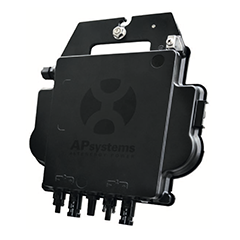Headquartered in the suburbs of Shanghai, APsystems was originally founded in the Silicon Valley over 11 years ago by Dr Zhi Min Ling, current Chairman & CEO and Dr Yuhao Luo, CTO of the company. Today PES Solar reports back from an interview with Olivier Jacques, President, Global Executive VP of APsystems, who draws a portrait of the company revealing details of one of the major product innovations scheduled for launch this summer 2021, the 3rd generation of dual microinverters: the DS3.
PES: Welcome back to PES Solar. Would you like to give us a brief overview of APsystems?
Olivier Jacques: It has now been a decade since we gradually established ourselves as the global benchmark in multi-module microinverters for the solar industry. Firstly, in the USA and Australia, then in Europe for over 5 years now and more recently in Latin America, we have today become one of the major players and undisputed leaders in this market with more than 250 employees,
1 Gigawatt of equipment installed serving customers in more than 120 countries.
The company and its field of expertise could be translated by one term: MLPE. Module Level Power Electronics means the ability to control power and monitor production at module level. In this MLPE offer, one of the flagship products is the microinverter which is also the core business of the company.
Today APsystems is setting the bar of the ever-growing solar MLPE segment with strong leadership.
PES: What are the specificities of APsystems’ microinverters range?
OJ: One of the main specificities of the APsystems microinverter range is that it is the most extensive on the market. We have products that will connect 4 single-phase panels for residential use, for example, with the QS1 having a maximum output of 1400W AC. Also, QUADs which will inject a native three-phase current for large industrial or agricultural roofs with the YC1000. Usually, our microinverters connect 2 to 4 modules.
This brings several advantages for solar professionals, in particular huge economies in the acquisition of materials and labor costs but also in the speed of installation. It also offers the user all the advantages that Microinverter technology provides, namely, maximizing the production of the installation, providing more safety on the roof, allowing flexibility in the layout of the installation, and managing the installation remotely.



























